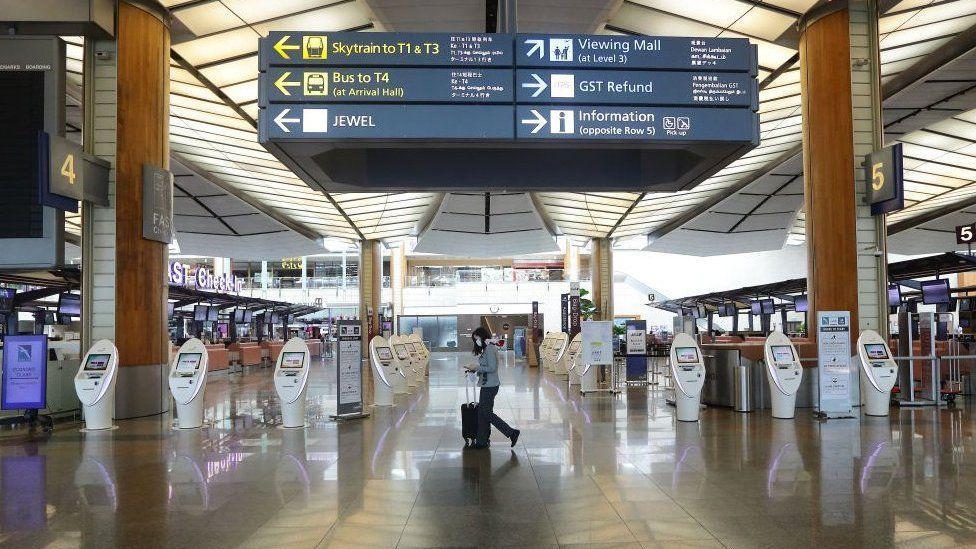Jahnavi Parikh was two when her father Piyush Parikh, an IT professional, moved to Atlanta, Georgia, in 1999. Jahnavi began school in the US and, later when her father moved back to India between 2004 and 2007, he enrolled her in a Mumbai school. Post 2007, she was once again studying in the US.
Two years ago, when Jahnavi applied for college admissions, she realised that unlike most of her classmates, she was not entitled to any of the scholarships that American students can apply for. “I had been a topper in class and this was a big blow. Even worse was that I couldn’t join any medical course, which is what I had set my heart on. Also, I can’t take up any job assignments in the US, because of my visa status as an H4 dependent child,” Jahnavi told ET Magazine from Atlanta. (Family members — spouse and unmarried children — of an H-1B worker are admitted to the US in the H4 category.) Jahnavi has now joined a second major in management information systems along with her pre-medical undergraduate course at the University of Georgia.
——Advertisement starts here ——
 NRIForShaadi.com World’s #1 App for NRI Matrimony. Thousands of members near your GPS Location. Download from NRIApps.com
NRIForShaadi.com World’s #1 App for NRI Matrimony. Thousands of members near your GPS Location. Download from NRIApps.com ———Advertisement ends here ———
Her problems don’t end there. Jahnavi’s father is on an H-1B visa extension with his employer, a business intelligence and analytics company, having filed his petition for a green card in 2009. Skilled Indian immigrants in green card queues foresee long waits going up to even 30 years or more in some cases.

Jahnavi turns 21 next year, and will face the issue of “ageing-out”. She will no longer be a part of her father’s green card petition as his dependent.
“My daughter who grew up in America and did all her education here will move to the status as an international student and will have to seek a fresh visa to continue her education here. If she applies for a job, her employer will have to file for a non-immigrant work permit for her, and all this for no fault of hers,” rues Piyush.
Green Card Backlog
Krishna Priya Kunapareddy Chinna, who came to the US 10 years ago for a master’s, is also worried about her daughter, who is 14 and in ninth grade. “When I came to the US, my daughter, Sarvani, was only three. Now as she finishes middle school, I have started looking at career choices for her,” Krishna Priya told ET Magazine from Missouri.

Early on, when talking to counsellors at her daughter’s school, she realised that the doors of medical education were completely shut for her. Further, when she turns 21, if her parents’ green card petition has still not been approved, Sarvani would have to compete with other international students for opportunities in college despite having studied in the US. And she could end up in the same green card queue as her parents, but many years behind them.
Like Krishna Priya, Addala Naidu, an IT professional based in Jacksonville, Florida, is waiting for his green card. His two sons, Jyothik Addala in the ninth grade and Sai Addala in the twelfth, are keen to study medicine and become doctors. “Most of the medical courses in this country only accept permanent residents or citizens. There are a few private courses which are expensive and education could work out to anything between $300,000 and half a million dollars,” Addala told ET Magazine. He added that foreign students such as him were not eligible for any loans or scholarships and after their medical courses would have to seek employment abroad.

The Parikhs, Kunapareddys and Naidus are not isolated cases. More than 1.5 million legal, high-skilled immigrants and their families are staring the ageing-out phenomenon in the face. While they have been living and working in the US for over 10 years legally, they will have to wait for anything between 30 and 70 years for their green cards, primarily because they are from India.
In 2012, the Obama government introduced the DACA policy, or Deferred Action for Childhood Arrivals. This policy, which President Donald Trump has scrapped, protects those who qualified for protection under the Development, Relief and Education for Alien Minors (DREAM) Act. While the DREAM Act was a relief for children living in the US as undocumented immigrants, the H4 Dreamers are dependent children of legal immigrants stuck in long queues because of backlog in the employment-based green card process for Indian applicants. When they turn 21, they will no longer be eligible to remain in queue as dependents.

The United States Citizenship and Immigration Services receives about 1,00,000 green card applications from high-skilled applicants of Indian origin every year. Applicants with the same skillset but from other countries in the same employment-based category often get their green cards within six months of applying. However, Indians — many of them with higher education at top US universities and doing well-paid, highly skilled jobs — are on extensions of H-1B or L1 work permits and waiting for their green cards (L1 visas, like H-1B, are temporary work permits). This is because of a country-based quota system that the US follows for permanent residency.
Primary applicants themselves cannot change jobs, accept promotions or start their own ventures because their green card applications are dependent on their employers. It’s worse for their Indian-born children who have no safety net or resident benefits when it comes to higher education or joining the workforce. And, worst of all, they run the risk of being deported when they turn 21.
“The green card backlog situation for highly skilled Indian immigrants is bad with wait periods of anywhere from 30 years to 70 years unless the rules are changed,” says Harshit Chatur, an IIT-Madras graduate who went to the US for an MBA and now works for an integrated utilities company in Houston, Texas; his employer filed his green card petition in 2012. Chatur is vice-president of an organisation called Skilled Immigrants in America (SIIA), which started as a Facebook group created by Anirban Das, who has a master’s in science from the University of Alabama. SIIA’s goal is to create awareness on green card wait that Indians face. Chatur adds that H4 Dreamers or foreign-born kids of these highskilled immigrants stuck in a decades-long green card backlog are worst placed and have to self-deport at 21 if they fail to get work or student visas.

“Some of the children of H-1B visa holders have or will turn 21 before their parent gets the green card. This is due to the large backlogs in the India second and third preference employment categories. Such dependent children need the US Congress to amend the law to protect them,” points out Cyrus Mehta, a New York-based immigration attorney. All important steps for green card petitions, which include background checks and labour certifications, are usually completed in a couple of years, but still the long backlogs continue.
Raising Awareness
SIIA now has over 1,52,000 members and is an advocacy group working towards raising awareness on the green card backlog issues, especially for children who risk ageing out. “We organise events in the US, particularly in Washington, DC, which are attended by many of our members and are trying to work with members of the House of Representatives and senators. We have chapters in most states and are working at raising awareness on this issue at the grassroots level,” says Chatur.
House representatives and senators are being approached to urge them to pass bills in the House and Senate that aim to eliminate country-based quotas within the employment-based immigration system, without increasing the immigration numbers. Extension of the H4 visa time for H-1B dependents beyond 21 is also being urged. A bill on this issue in the House of Representatives has broad bipartisan support and 230-plus co-sponsors.
Neha Mahajan, a media professional from Delhi who moved to the US a decade ago on a H4 spouse visa with her IT professional husband, was one of the campaigners for the rights of H4 dependent spouses of H-1B visa holders to work in the US. Today she feels that when working on advocacy for spouses of H-1B visa holders, the H4 Dreamers were probably overlooked. “There are over 1 million H4 Dreamers, and a lot of them are agedout kids, who will turn 21 before their parents can get their green cards. Sadly, H4 Dreamers aren’t covered by the Dream Act legislation aimed at legalising young, undocumented immigrants,” Mahajan told ET Magazine from New Jersey.
Contact PhoenixGMN or PhoenixInfomedia.in for all your App & Web design development needs. Other services include – SEO, Online Promotion, Digital Marketing, App Explainer Videos, eShops & much more. Checkout Our Handpicked Apps Portfolio & Videos here – https://goo.gl/DzcCWd



